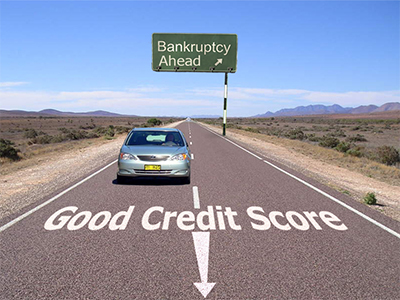In the recent years the number of people filing for bankruptcy has steadily increased. According to American Bankruptcy Institute, the number has increased to almost 50 percent from that of the first half of this year. Bankruptcy filing is stressful and one cannot shake off the added difficulties that bankruptcy brings with it.
You may end up feeling ashamed, overwhelmed, and depressed. But that does not solve your specific financial needs. For that you need to think out the various ways in which you can recover from this depressing situation. If you are finding it difficult to plan it out yourself, here a few tips that can help you out:
- Identify the root cause of the problem: Before you set out new plans to recover from your financial distress, conduct critical analyses of the same. You have to know what caused the problem in the first place in order to handle it in a better way. If you know the problem then it becomes easier to search for the right solution. For example, if you are facing a financial crisis due to overspending, put a check to your expenses to control it. You can also set a new budget or look for another job opportunity to increase your finances so that you can have a steady recovery.
- Set your goals: You need to set your priorities right before you start on a recovery mission. You need to be clear about your aims and functions along with the process you will follow to attain a steady recovery. Your future goals like whether you want to become a homeowner or buy a new car should be set out clearly.
- Do not get into any unfair deals: Lenders prefer to lend to people who have recently filed bankruptcy. This is because bankruptcy filing restricts them from filing bankruptcy over the next eight years. But while taking any further loans you should be aware of any unfair dealings. Stay away from those organizations and companies which offer payday loans and rent-to-own deals at high interest rates. Instead of jumping into deals that carry high interest rates it is better that you wait for a better one.
Tips to rebuild your credit score post bankruptcy
A bankruptcy might appear on your credit report up to ten years and there’s a good chance that your credit score will be low enough until you take some significant steps to rebuild your credit rating. Repairing your credit post bankruptcy takes persistence, fortitude and a steady stream of monthly timely payments. Since bankruptcy harms your creditworthiness to a great extent, it can mar your future efforts of taking out new lines of credit. At the same time, you should also keep in mind that bankruptcy isn’t the end of your financial life. There is still hope for you. Here’s what you can do to enhance your credit score.
- Get a copy of your current credit report: The first step towards rebuilding your credit report is to learn where you stand exactly, so that you can work on improving your credit report accordingly. Get hold of your credit reports from all the major national credit bureaus Equifax, Experian and TransUnion. You can either order them or get your reports online and then take a close look at them. Scrutinize each and every listing on the report and then focus on any negative listing that is hurting your credit score.
- Analyze your credit report carefully: Once you receive the 3 credit reports, scrutinize them and make sure all the information in the report reflects your bankruptcy case. If you locate some errors or trace accounts which are open inspite of closing them , you can dispute them with the credit bureaus. Since bankruptcy stays on your credit report for up to 10 years, you need to be vigilant about the mistakes.
- Pay your bills on time: Since your credit score has already been hit by bankruptcy, you must be aware of the fact that your payment history makes up 35% of your credit score. Hence, it is needless to say that one of the simplest ways of improving your credit score is to make sure you pay your bills on time. Set up reminders on your calendar and pay your bills every month on or before the due date. You can also automate your savings account so that a fixed amount of money is deducted from your checking account and transferred into your savings account.
- Scale down the amount of debt you owe: This is a step that is easier said than done but downsizing the amount that you owe will be a more satisfying achievement than repairing your credit score. For this, the first thing you need to do is to stop using your credit cards. Get a copy of your credit report to make a list of all your accounts and go online to check recent statements to evaluate the amount that you owe on each account. Write down the interest rates that they’re charging you and set up an alternative payment plan to trigger off your debts.
- Tally the expiration dates: According to bankruptcy law, the record of your bankruptcy filing will continue to appear on your credit report for 7 to 10 years even after your debts have been paid off or discharged through bankruptcy. But the exact expiration date might not be same on all of the credit reports that you have ordered from the credit bureaus. This might happen with other listings on the report as well. So find out the exact expiration dates for each of the bad listings including judgments, liens, charge-offs, late payments, bankruptcy filings, and collection records. You can expect a major improvement in your credit score after these negative listings expire.
- Adopt a no-frills life: If you’ve filed Chapter 13, this means that you’re repaying some of your debts through the reorganization plan. For 3-5 years, the court allows you to set aside an amount to live on and the trustee divides the rest among your creditors every month. This clearly implies that you need to adopt a no-frills lifestyle. It might mean changing the basics in your life like how much you’ve paid for groceries each month and using little or no credit cards. On the other hand, if you’ve filed Chapter 7, you’ve walked away from most of your debt and now the salary is yours. Start living on cash rather than counting the number of credit cards you have.
- Obtain a secured credit card: This might be a tough endeavor for you, especially if you’ve already filed Chapter 7 or Chapter 13 bankruptcy but you got to do this if you want to replenish your credit score and again be a favorite in the lending industry. Get yourself a secured credit card if you have a bank account to show as collateral. With a secured card, you can charge up to the amount that you have in a bank account. Ensure that you choose a secured card that regularly reports to the credit bureau.
- Add an installment loan to your portfolio: Once you’ve passed 2 years post-bankruptcy, you may consider adding an installment loan like a car loan or a line of credit to your portfolio. If you take out a car loan, make sure you buy an affordable vehicle that is easier to repay. Yes, you might be subject to high interest rates but you can start off by shopping around for the best rate. Keep in mind that once you take out an installment loan and start making timely payments on it, the next interest rate will most likely be lower.
- Beware of credit repair companies: When you’ve survived a bankruptcy, it is pretty natural that you will soon get offers from credit repair companies that promise to repair your credit overnight. As you’re desperate to rebuild your credit, you might succumb to the temptations of seeking help of such companies. You should make sure you thoroughly interrogate these services before you take the plunge. Their fees can be hefty and most often they come with no fruitful result. Instead of seeking professional help, you can try the ways you can personally rebuild your financial future.
- Track your developments: Responsible use of credit is not only about making timely payments, but also about tracking developments in your credit rating. You can do that by enrolling in a credit monitoring service or get a credit monitoring software to monitor improvements in your credit rating. You can expect steady improvement in your credit report with the responsible use of credit over time.
Bankruptcy is a financial disaster that can hit any one of us. But there is nothing to feel shattered and hysterical about if you need to file for bankruptcy. If you resolve to be financially responsible after bankruptcy, then reshaping your credit worthiness will not be a big deal. After all, bankruptcy is meant to give you a fresh start!









